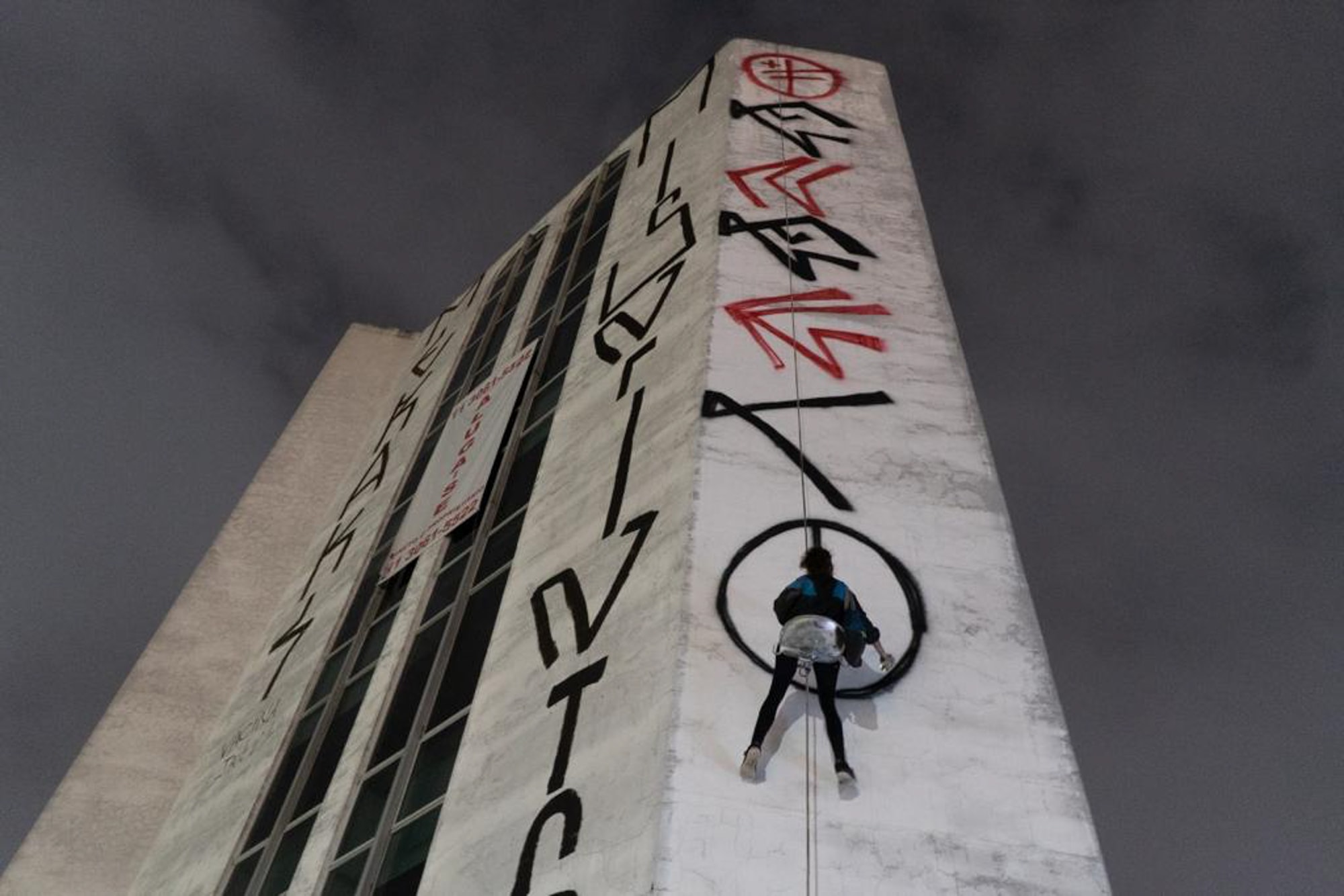
Art as a Crime, Crime as Art
Pixação, written with an “x,” emerged as a movement among young people from the outskirts of São Paulo who defied the police by writing their names in black ink on the walls and skyscrapers of the city center. Irene Avramelos, also known as Eneri, a visual artist and Pixadora, is one of the young individuals who embody the evolution the movement has undergone since its inception in the 1980s. She says its essence remains “in the illegal, in the transgression.”
By Miguel Vilela
The act of writing on walls with black paint, called “pichação” in Portuguese, probably has existed for centuries, as long as there have been paintings and walls. However, “Pixo,” written with an “x,” emerged at a specific time and place: during the 1980s in the city of São Paulo. What started as a carefree pastime of signing one’s name with black ink on walls scattered across neighborhoods, with stylized letters inspired by rock band logos like Iron Maiden and Kiss, soon escalated to skyscrapers, taking over the entire city and becoming a movement. Nowadays, it’s impossible to pass through São Paulo without noticing it.
Considered an environmental crime in Brazil, punishable by three months to one year in jail and a fine, Pixo is an “expressive development mostly carried out by young people from the outskirts, and it functions as the voice of the voiceless, the silent cry of the invisible, a painted roar, an existential run, an identity,” as stated in the manifesto by Cripta Djan, a pioneering Pixador in the art of climbing, a mode in which one risks their life by climbing up buildings from ledge to ledge without safety equipment to leave their names as high as possible.
In the 2000s, Pixo forcefully entered art galleries. The 28th São Paulo Art Biennial, held in 2008, was marked by the invasion of 40 Pixadores who scribbled on the part of the second floor of the exhibition pavilion, whose white walls were left empty by the curators to discuss the void in art. At first, the Biennial lamented and condemned what happened, but in the following edition, in 2010, the group was invited to exhibit. In 2012, they reached the Berlin Biennale without controversy: they painted a historical church and threw a can of paint at the curator when he tried to dissuade them.
Recently, Pixo also appeared on the cinema screen: the Biennial invasion inspired the script of the fictional film “Urubus,” produced by Fernando Meirelles, acclaimed director of “City of God.”
The young Pixadora Irene Avramelos is the result of this evolution that Pixo has undergone in recent decades. She financially sustains herself by creating works of art that represent the aesthetic consecrated on the walls. Still, she continues to risk her life because “the essence of Pixo lies in the illegal, in the transgression, in the street.” Her signature, Eneri (Irene spelled backward), can be seen throughout São Paulo.
In this interview in Portuguese, she talks about what it’s like to be a female Pixadora trying to claim presence and recognition in the largest metropolis in the Southern Hemisphere.
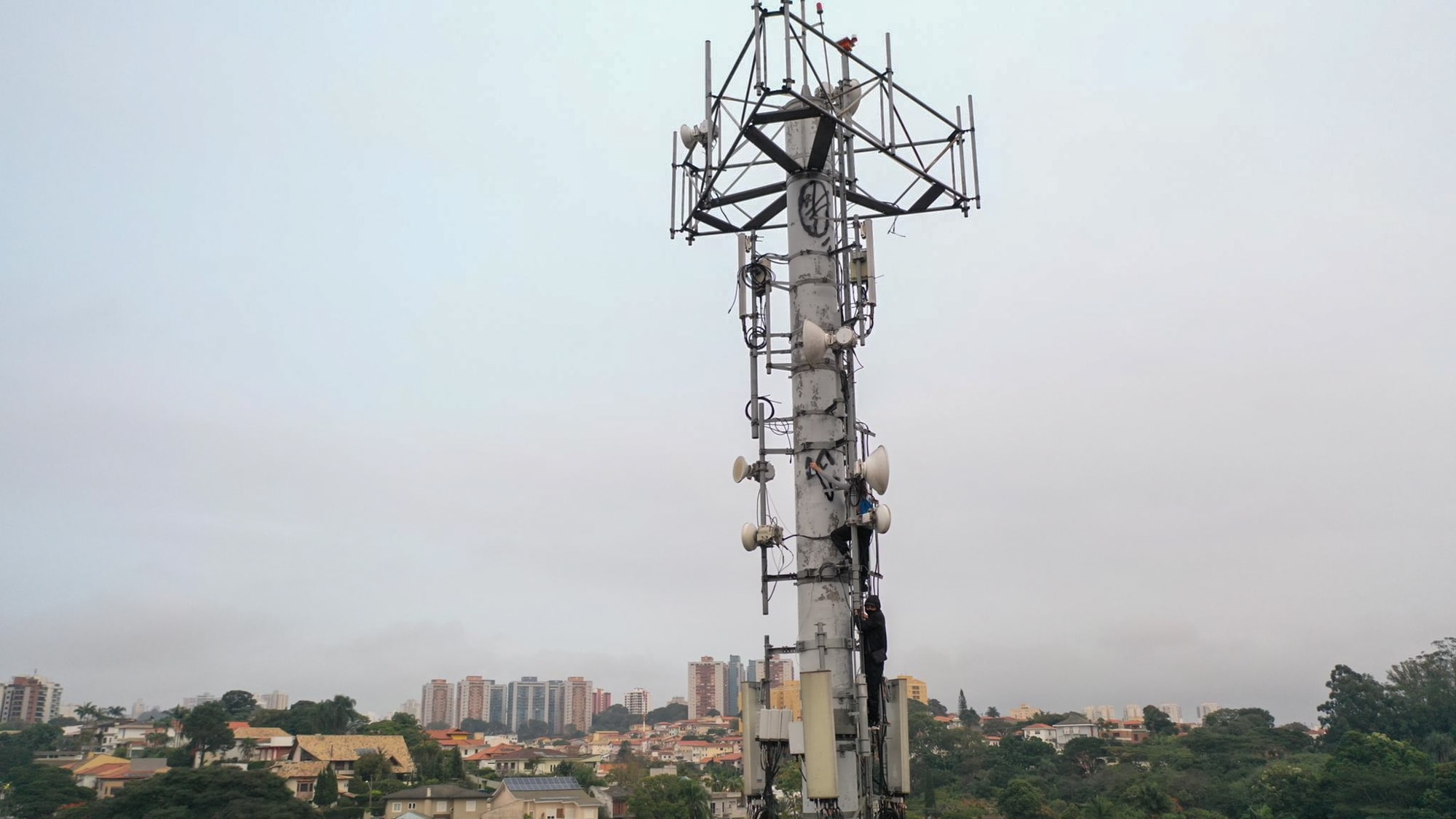
“As a woman, the urban space for us, especially at night, is highly denied. Being on the streets at night alone is considered very dangerous. There were police officers who approached me because I was an easy target, almost disdainful of me for being a woman and being out on the streets.”
Why did you start Pixo, and what message do you want to convey?
It was pretty coincidental. In my adolescence, I started attending some events: funk dances, rap battles, and some events in São Paulo’s reggae scene, like sound systems, and in the midst of that, I discovered the pixação spot in the city center.
There’s a place called Poente, where Pixadores used to gather. People would sign sheets there. So, I got to see the movement as something collective.
I had seen a lot of pixação in São Paulo before, and I think everyone notices it in the city, but I couldn’t understand the reason behind it. At that spot, I started to have contact with people who were already doing it, and I began to understand it. I found it very interesting to walk around the city and feel the presence of some of my peers.
I started doing it more out of curiosity, but it became almost addictive. It had to be that way, right? After my first encounter with the police, I tried to quit, but before I knew it, I was back on the streets again. At first, I didn’t know exactly why. I think I needed to express myself to experience the city. Pixação makes us explore places we wouldn’t go if it weren’t to expand the movement. We live in different scenarios, studying the city and reviewing the architecture.
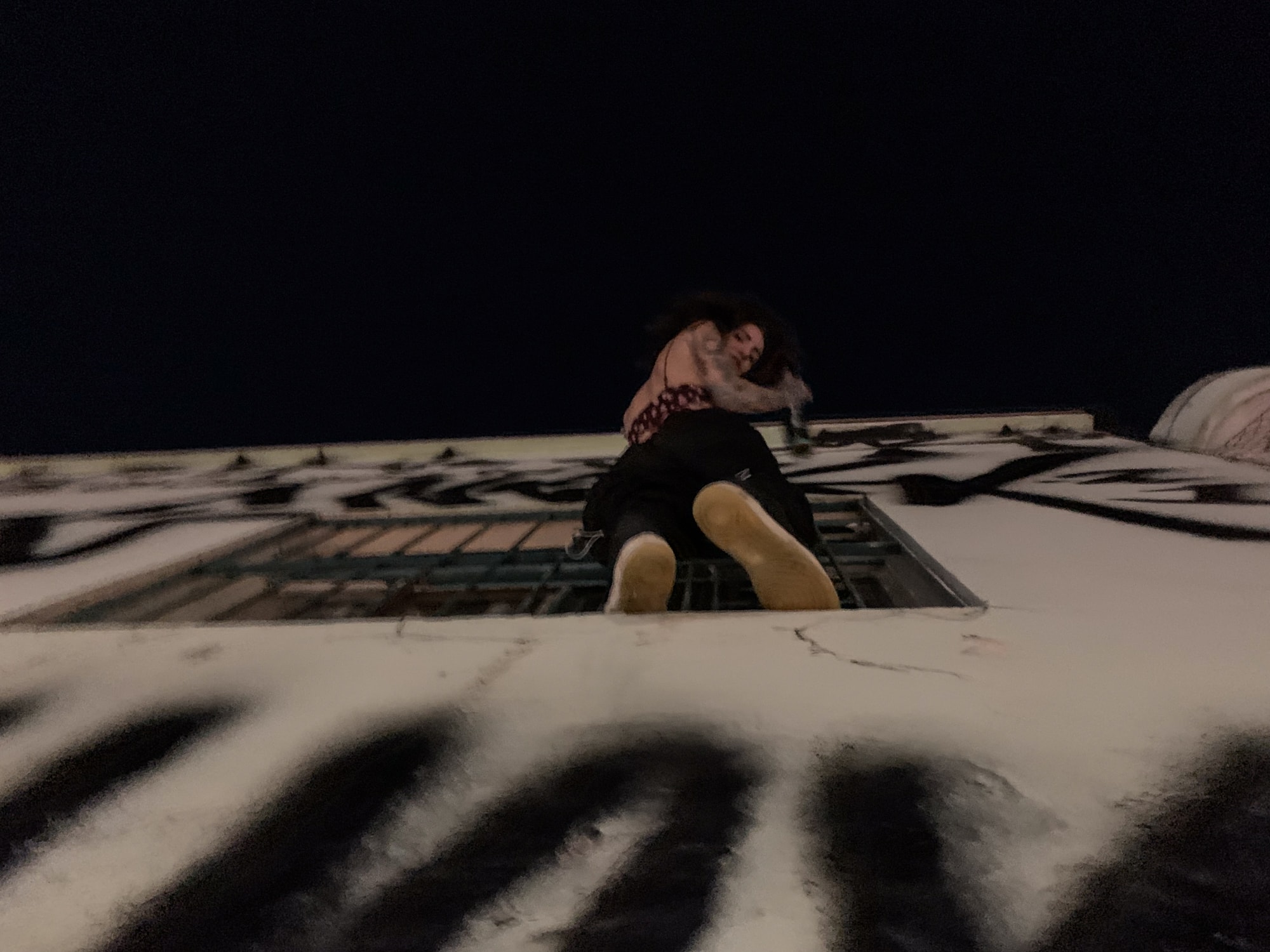
Photo of VG
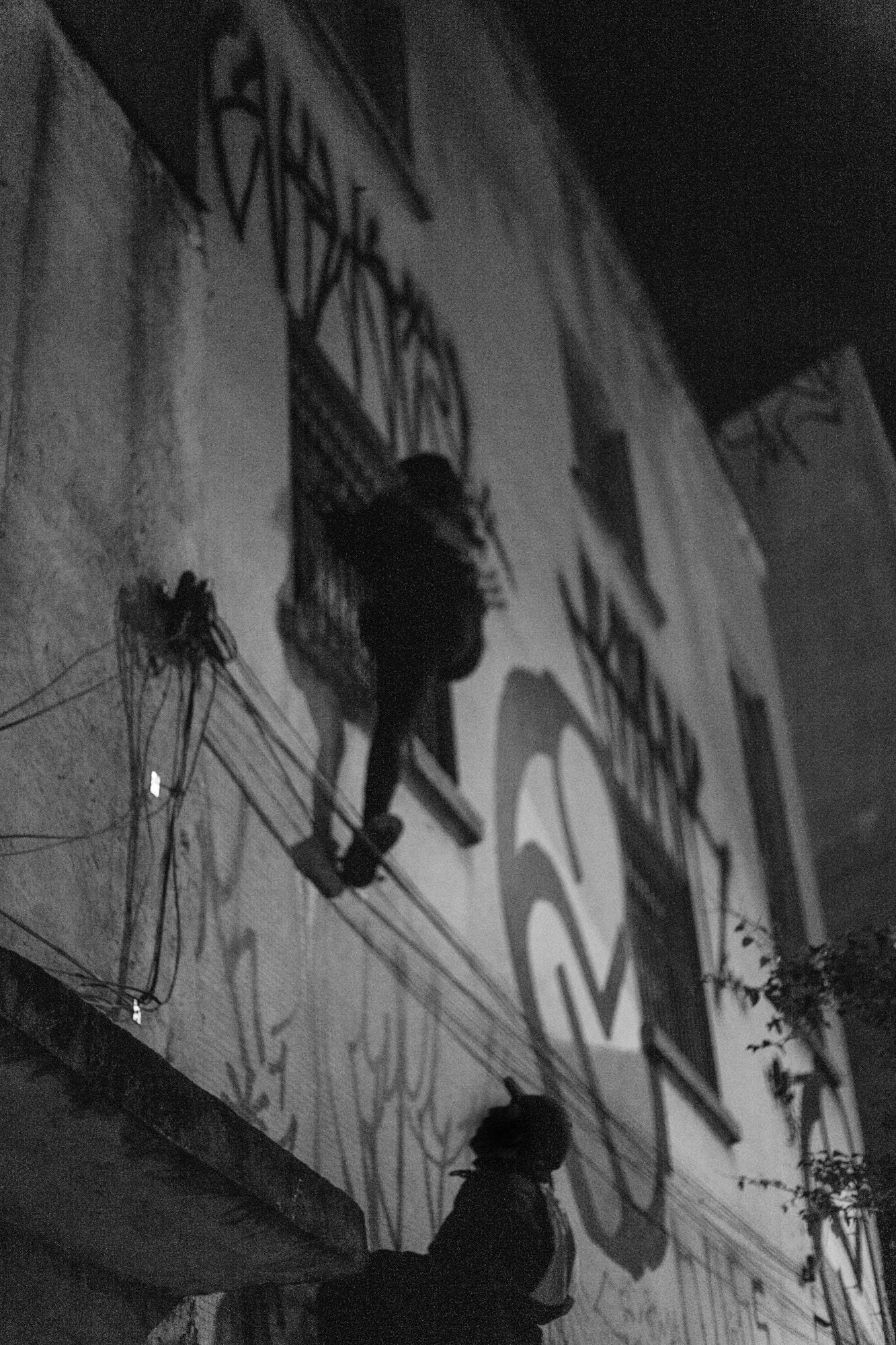
Ricardo Cases – Elemental Study of the Levant
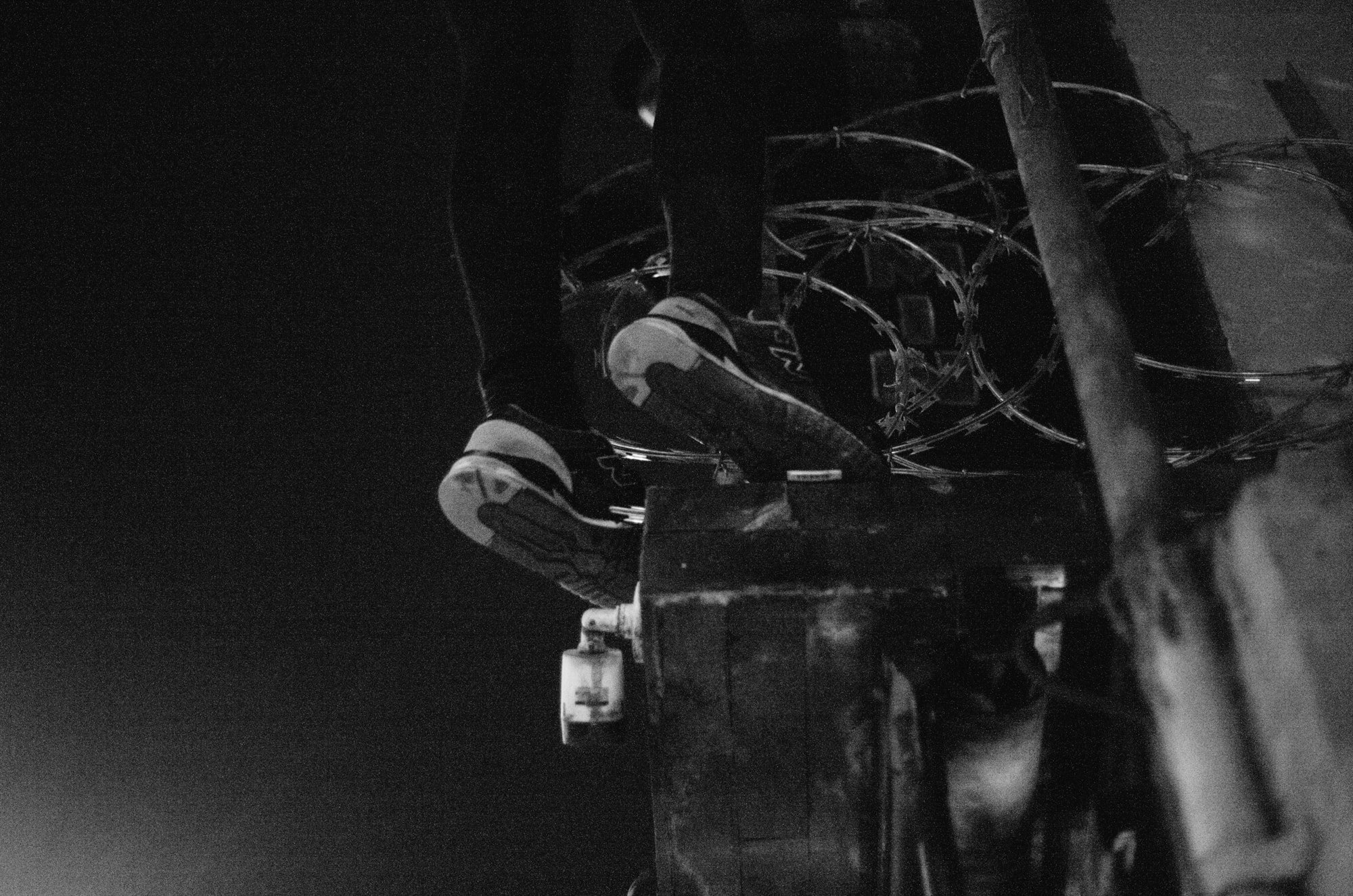
Photos by André Fellp
But nowadays, I understand well the reasons why I do it. As a woman, the urban space for us, especially at night, is highly denied. Being on the streets at night alone is considered very dangerous. There were police officers who approached me because I was an easy target, almost disdainful of me for being a woman and being out on the streets.
I also wonder what the limits of art are, the limits of freedom of expression, and why it has to be confined only to established places. I also think a lot about the issue of city pollution because pixação is not actual pollution. It’s only visual, aesthetic pollution but much more bothersome than real pollution. Sometimes it seems like what the eyes don’t see; the heart doesn’t feel, you know?
And Pixação breaks with that, showing that we are still under colonization today. They are exploiting the city in various ways, and the urban environment itself is already a major environmental aggression.
Nowadays, I like Pixação because it can address several issues in one action, in one thing.
Do you, or the Pixo movement, advocate for its legalization?
No, because that transgression is precisely the essence of Pixo. If you legalize it, you regulate it, and it will be necessary to establish where it can be done in advance. We don’t want regulation because we don’t want the domestication of Pixo. I work on some commissioned pieces, but I understand very well that they are representations of Pixo aesthetics. At the same time, the essence of Pixo will always lie in illegality, transgression, and the streets.
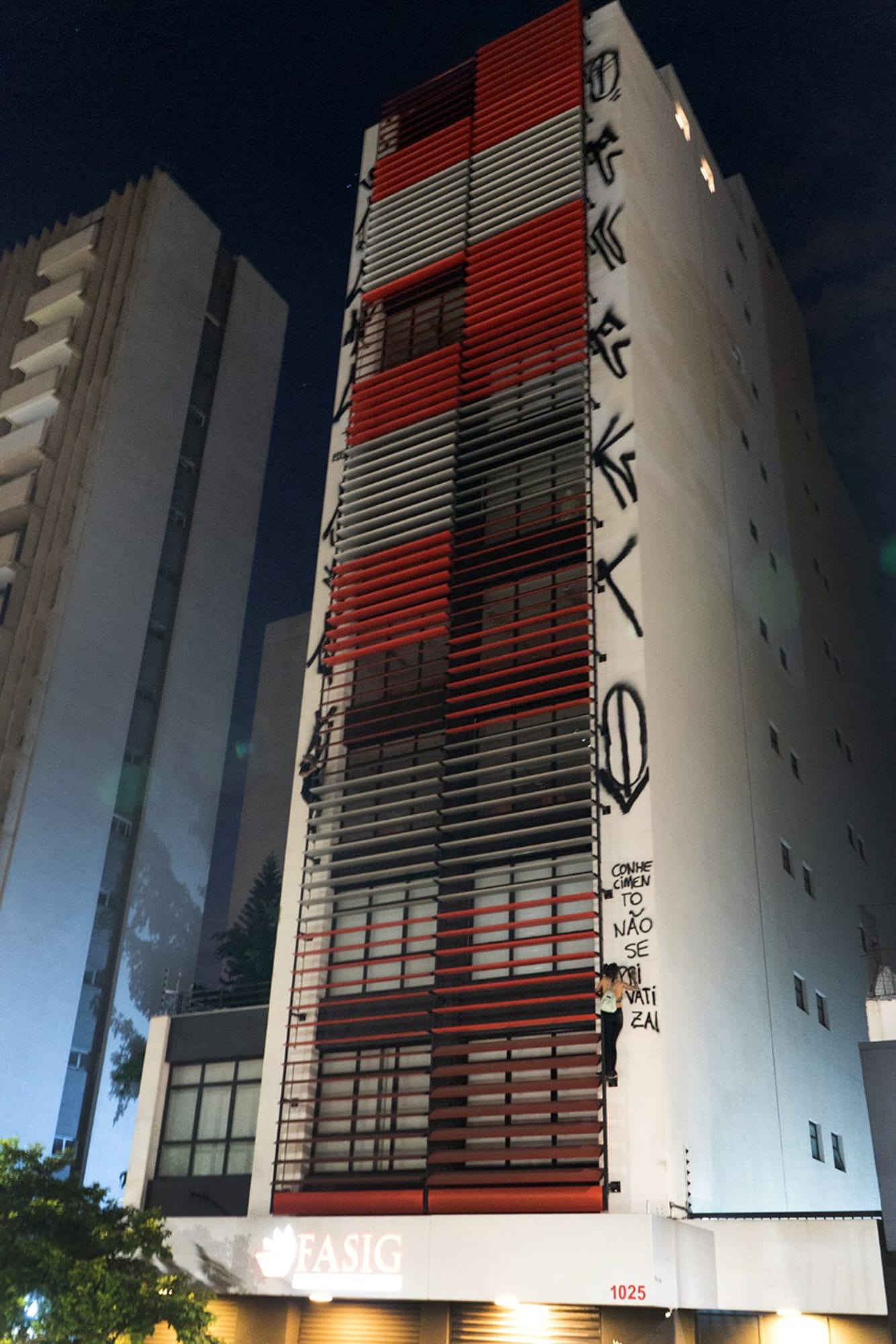
Photo by Carla Arakaki
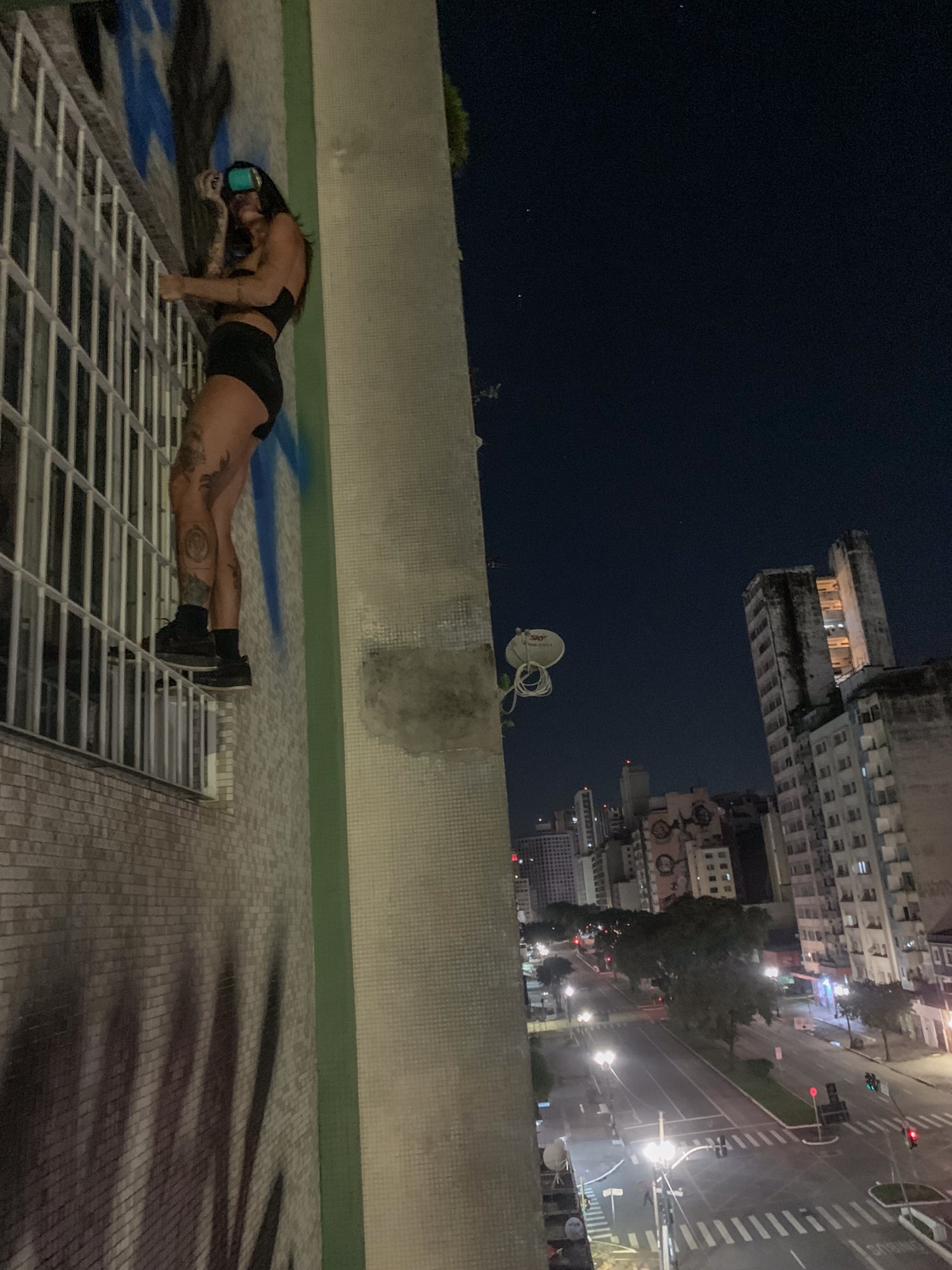
Photo by VG
I wonder what the limits of art are, the limits of freedom of expression, and why it has to be confined only to established places. I also think about the issue of pollution. Because Pixação is only a visual, aesthetic pollution, it’s much more bothersome than actual pollution. Pixação shows that we are still under colonization today. They are exploiting the city, and the urban environment is already major environmental aggression.
Do you consider Pixing lower places more dangerous than higher ones?
I think it’s crazy how we tend to see things from our reality. When I’m with people who Pix, they are always looking up, seeking possibilities, looking for spots, finding paths.
I’ve had moments when I was doing Pixação in a high place, and we made some noise, and a person was passing below. We looked at each other with a bit of fear, fearing that the person would have the intuition to look up.
But we realize that people only look at eye level. They don’t think about the possibility that the noise comes from outside the dimension they are looking at.
When you are at street level, you are more vulnerable because you have to turn your back in a place where anyone passing by can see you and potentially confront you, as has happened to me a few times.
But when you are in a high place, you are often protected. Even the relationship with the police becomes easier. There have been situations where I knew they couldn’t reach where we were. Once, we were on a balcony, and at one point, the police decided to leave, and they left. We were able to finish and descend without any problems. So there is a bit of protection because it’s a less accessible place.
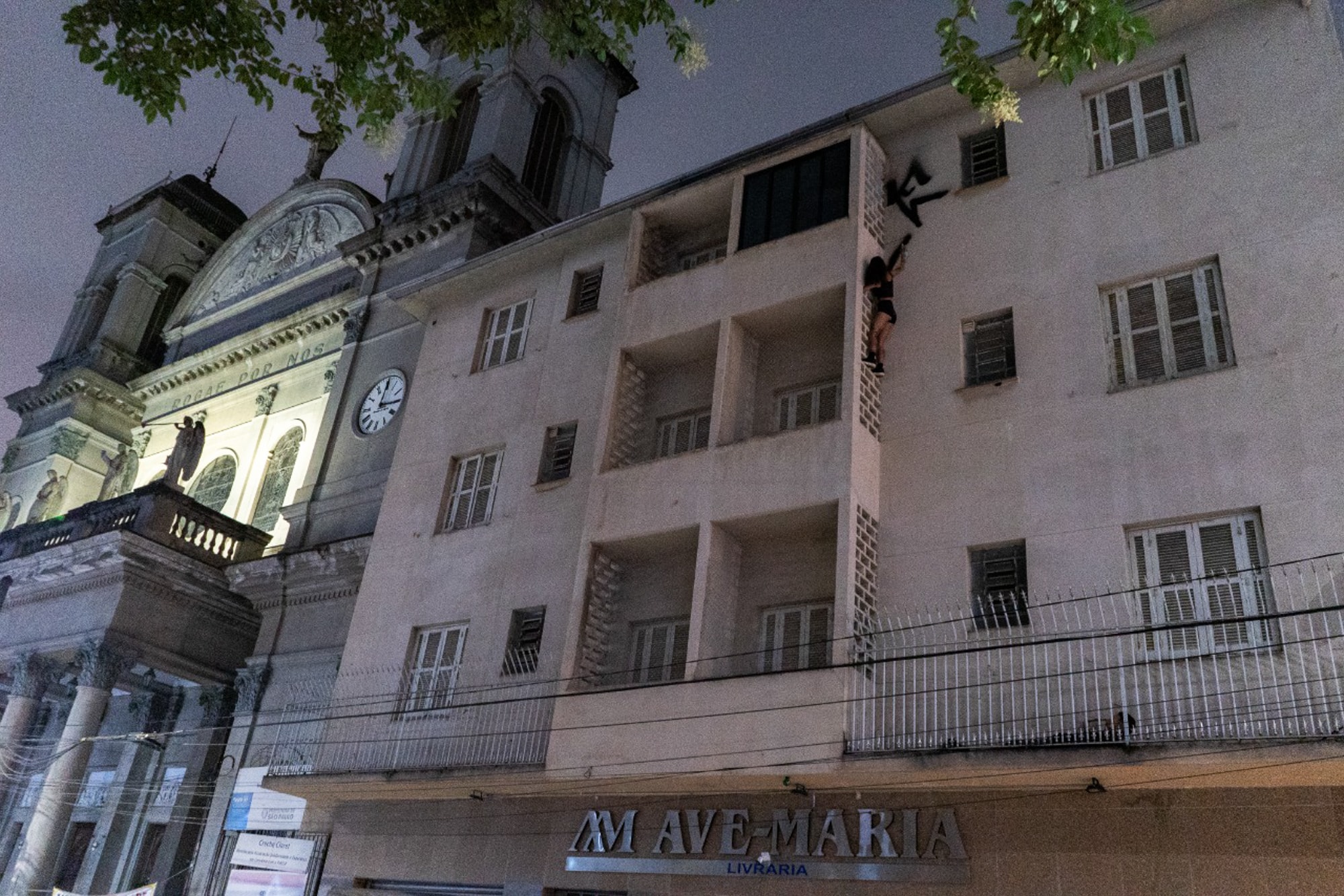
Photo by Carla Arakaki
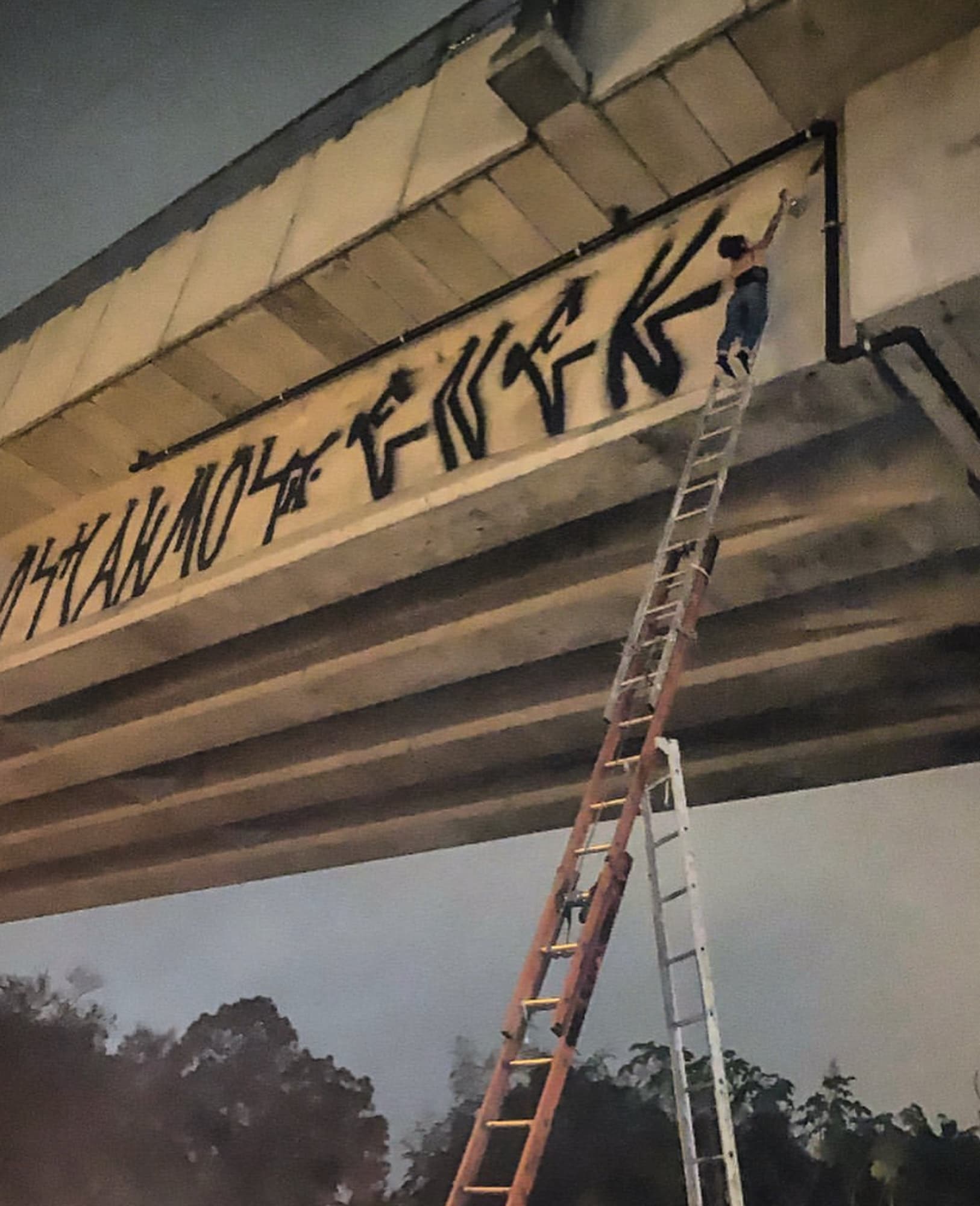
Photo by VG
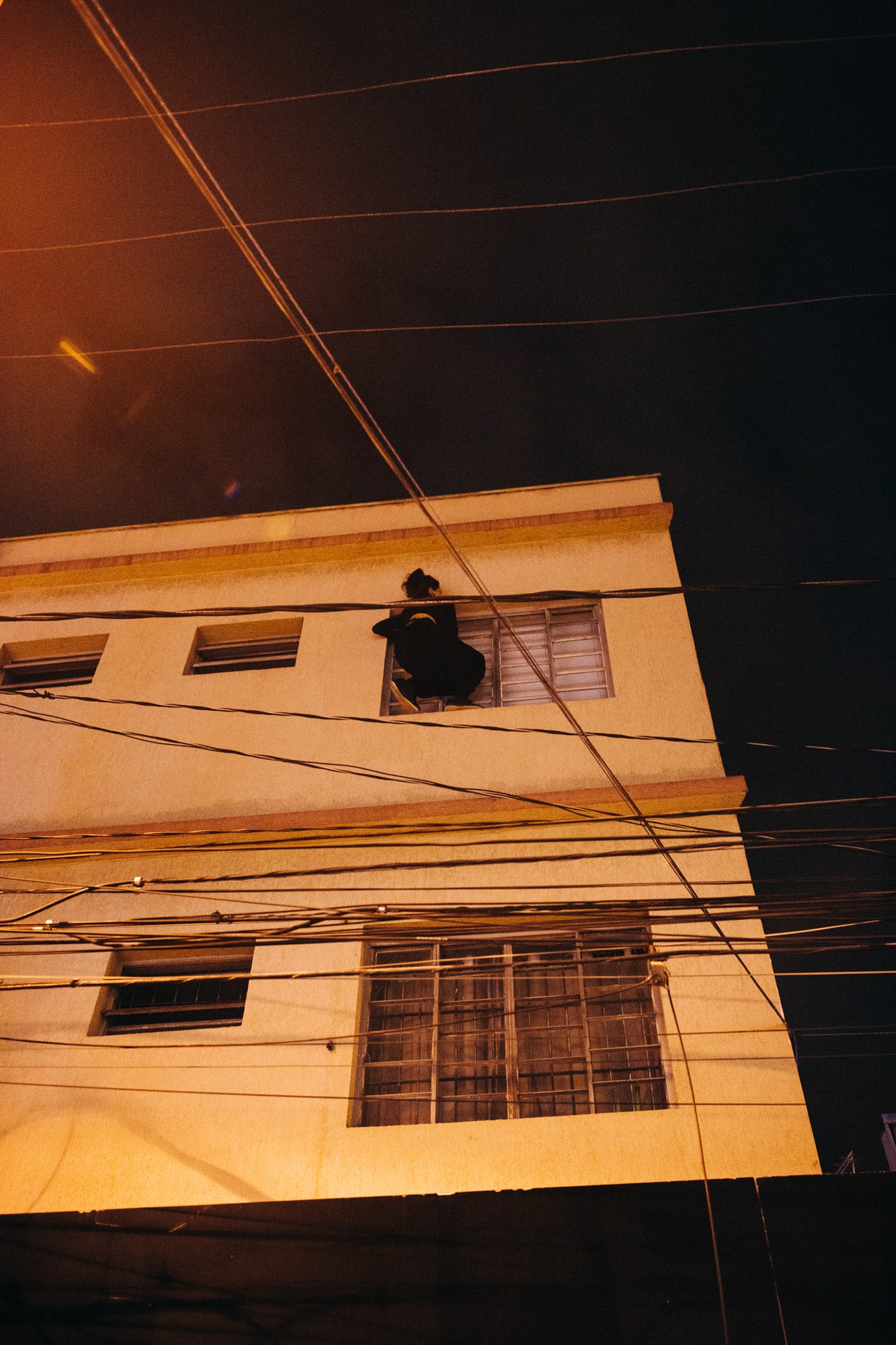
Photo by Tomarera
Why do you sign as Eneri?
I started signing my name Irene to be called to join a Pixo group. But while hanging out with the Pixadores, I noticed that there were often fights among the people in the group, almost an internal competition between them.
So I stopped worrying and started doing Irene in Pixo as well. But the first time I signed a process at a police station, the officers scolded me, saying they would investigate, read what was written, and search for me on social media since I was putting my name on the wall.
So I tried to put my name in reverse, thinking it might evade something. But from there, I also started accepting my name more because I was ashamed of having an older name. I researched and found out that Irene means peace.
So I realized that Eneri had a lot to do with the relationship of Pixo with the city, resulting from this chaotic world of the metropolis that is São Paulo. From there, I delved a bit deeper and developed a concept.
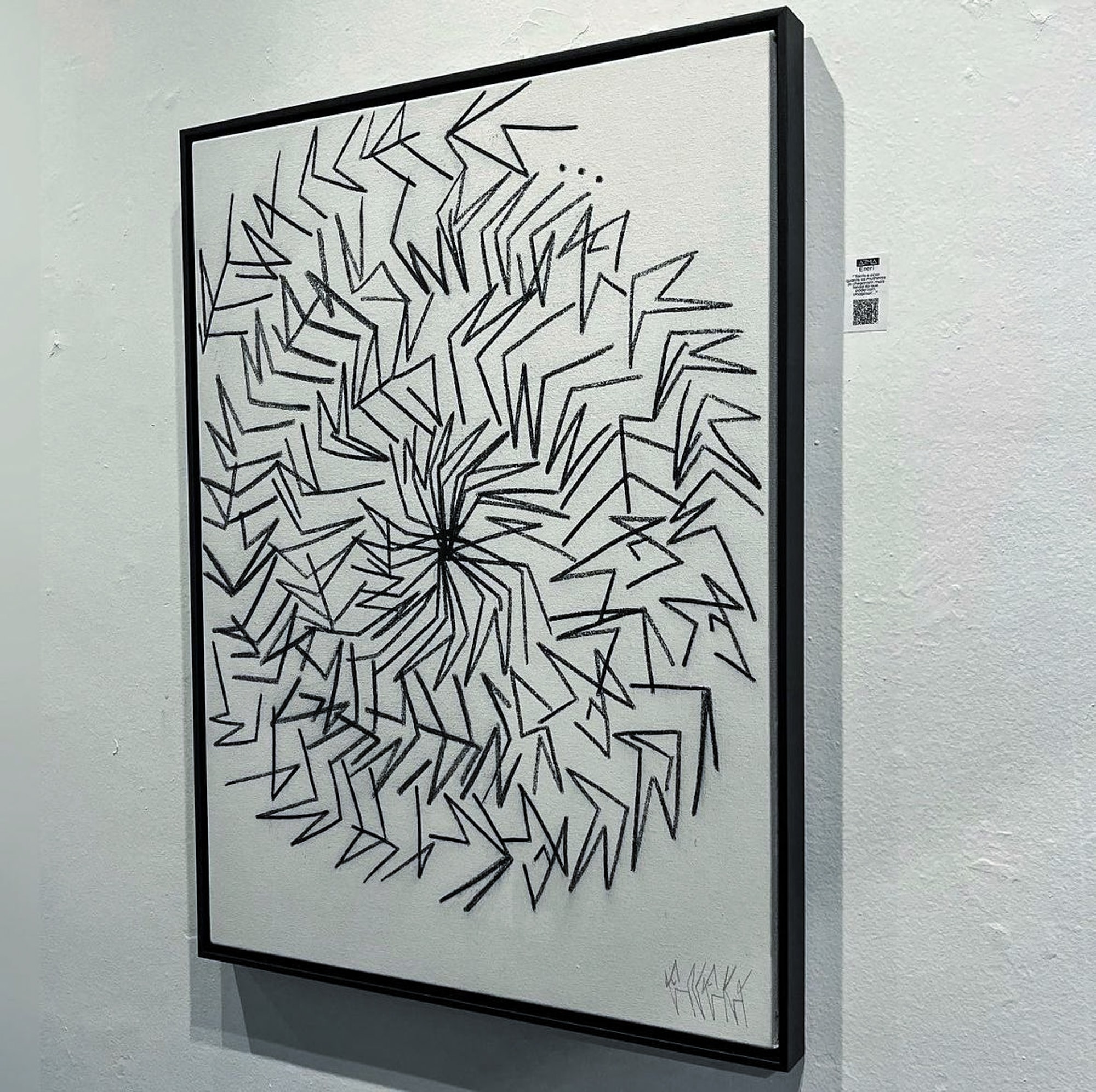
Can you talk a bit about the ethics of Pixo? For example, I know that it’s not well-seen to Pixo over someone else’s Pixação.
It’s not just that it’s not well-seen. It’s worse; it’s a matter that generates a lot of problems. My first contact with Pixo as a movement was at the Pixo spot, but there was a time when I was playing around with a friend and went to do something on the wall.
I started doing it without looking carefully at what was behind the wall. And he saw it and got desperate. He said, “Hey, you’re crazy. You did it on top of someone else’s Pixos. Do you think that person will be happy that you come here and put your letters over theirs?”
I also got desperate; I didn’t know what to do. So we made an arrow and wrote “Sorry,” apologizing. When I had contact with the Pixo movement, I realized how serious it was. There have been fights and even deaths because of this.
It’s a bit calmer nowadays because everyone who starts already understands this. It’s something you have to pay a lot of attention to. Even if the Pixo is very faded, if you go over it, they can come and charge you for it.
I think that’s interesting because it preserves the history of the places a lot. There are walls preserved from the 1980s and 1990s. That’s also one of the main reasons why climbing is so intense here. It accompanies the city’s verticalization, but the lower floors are so saturated that people are forced to climb higher and higher to find new spaces.


